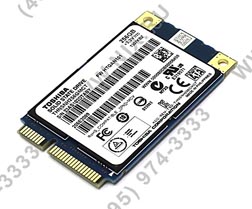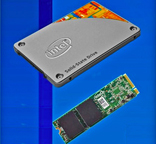Memory and storage is one of, if not the, fastest changing area in our industry. Here we offer a few of the latest products that might change your next design for the better.
UNH-IOL at the Flash Memory Summit
At the Flash Memory Summit, the University of New Hampshire InterOperability Laboratory (UNH-IOL) announced the launch of a new consortium dedicated to qulifiing high-performance PCIe SSDs to the enterprise and storage markets. The UNH-IOL is a neutral, third-party laboratory dedicated to testing data networking technologies through industry collaboration. It offers collaborative testing programs in over 20 data networking and storage technologies. www.iol.unh.edu
Crossbar RRAM
Start-up company Crossbar is pioneering a new category of high capacity and high-performance non-volatile memory. The say their form of resistive RAM (RRAM) technology will be capable of storing up to one Terabyte of data on a single 200 mm2 chip.
Due to its simple three-layer structure, Crossbar technology can be stacked in 3D for high density. The memory cell is based on three layers: A non-metallic bottom electrode, an amorphous silicon switching medium and a metallic top electrode.

The crossbar RRAM switching structure.
The resistance switching mechanism is based on the formation of a filament in the switching material when a voltage is applied between the two electrodes. This simple and scalable memory cell structure enables a new class of RRAM which can be easily incorporated into the back end of line of any standard CMOS manufacturing fab. Crossbar has now successfully developed its demonstration fully integrated monolithic CMOS controller and memory array chip product in a commercial fab. The company is currently completing the characterization and optimization of this device and plans to bring its first product to market in Q1 2014. www.crossbar-inc.com
Small Toshiba mSATA SSD
The THNSNH256GMCT mSATA SSD module from Toshiba uses an advanced multi-level cell (MLC) 19 nm NAND technology. The 30.0 x 50.9 x 3.9 mm drive targets high end and thin notebooks and tablets, PCs, as well as industrial PC applications. The small form factor drive boast a high capacity of 256 Gbytes.

The THNSNH256GMCT mSATA SSD module from Toshiba.
This series of SSDs features Toshiba's QSBCTM (Quadruple Swing-By Code), a strong and highly efficient ECC protecting against any read errors. It has deterministic zeroing TRIM function, allowing the host OS to inform the SSD about data blocks which are no longer in use and can be wiped internally. The THNSNH series also uses advanced power management technology to ensure the lowest energy consumption. With an additional 'data corrupt protection' feature, the SSDs protect any data which is being moved internally against unexpected power-loss or write errors.
The unit weighs only 7.8 g and performance for the 256 G version is listed at 534 Mbytes/s read and 471 Mbytes/s for write. There are also 60 and 128 Gbytes versions.
http://storage.toshiba.eu/cms/en/hdd/solid_state_drives/product_detail.jsp?productid=556
Virtium SSD
Virtium offers the DecaStor line of SSDs. Designed for embedded systems OEMs they come in 2.5 and 1.8-inch formats in 80, 160 and 300 Gbyte capacities and feature 10-channel controllers for fast data transfer and a SATA III 6 G interface. The 1.8 inch models are 54 x 78.25 x 5 mm in size, take 1.7 W, and the 300 Gbyte version has read/write speeds of 400/375 Gbytes/s and projected endurance of 195 Gbytes/day for ten years. www.virtium.com
Latest Intel SSD
Intel Corporation has announced the Solid-State Drive Pro 1500 series. The new business-class SSDs are engineered for easy IT deployment and secure manageability, and offer a lower total cost of ownership with enhanced performance. The 1500 has capacities ranging from 80 to 480 Gbytes and is available in both thin 2.5-inch and smaller M.2 form factors.

The Drive Pro 1500 series from Intel is available in two formats.
Migrating to SSD-based PCs can improve employee productivity by as much as 13 percent, according to research by J. Gold Associates. The Pro 1500 series allows IT departments to increase employee uptime and reduce cost with its advanced manageability and security features. Also, the Intel Stable Image Platform Program ensures that key drivers are in place and makes transitioning to the Intel SSD Pro 1500 Series simple and predictable. The ability to remotely manage assets and diagnose issues at the drive level means fewer desk-side service visits.
The drives also protect data from unauthorized access with enterprise-grade security features, including hardware-based 256-bit AES encryption and industry-standard Opal key management protocols. The 1500 series is designed to work with the 4th generation Core processors with vPro technology. Using the Intel Setup and Configuration Software3, IT managers address problems before they arise by remotely managing devices and extracting drive diagnostics to proactively monitor storage health.
Sequential read speed is up to 540 Mbytes/s and sequential write speed is up to 490 Mbytes/s. Power consumption for the M.2 format is active 140 mW typ, idle 55 mW typical, and sleep mode 200 μW. For the 2.5 inch drive it is 195 mW/125 mW/5 mW. Intel SSDs offer reliability with annualized failure rates well below 1%. The AFRs of other SSDs and HDDs may reach 5 percent or more. The Pro 1500 series is said to reduce costs and minimize employee downtime as a result of storage-related failures.
Minimizing downtime for the growing mobile workforce using thin and light mobile computers is critical to increase productivity and reduce IT costs. Rick Echevarria, vice president and general manager of Business Client Platform Division at Intel said “We believe the combination the drives, vPro technology, and tools such as Intel setup and configuration software will trigger innovation among ISVs and improve enterprise PCs in the near future.”
Cypress note on networking system memory
Today's high-speed networking applications require high-bandwidth and high-density memory. For instance, typical networking line cards need memories for packet buffering, table lookup, and queue management among a host of other functions. Quad Data Rate Static RAM (QDR SRAM) is probably the best fit for this application. Dinesh Maheshwari, CTO of Memory Products Division at Cypress, told me that “The packet traffic through high performance switch or router line card running at 100 Gbits/s or greater is effectively random. Hence, the key requirement for memory here is its ability to perform several truly random accesses for every packet. The metric for this is called random transaction rate (RTR). Only SRAM scales every generation to meet the RTR requirements. QDR SRAM offers an RTR in the order of a billion random transactions per second, while the best DRAM based alternatives are limited to around 125 million random transactions per second and the standard SDRAM can only do approximately 20 million.”
Advertisement
Learn more about Electronic Products Magazine





